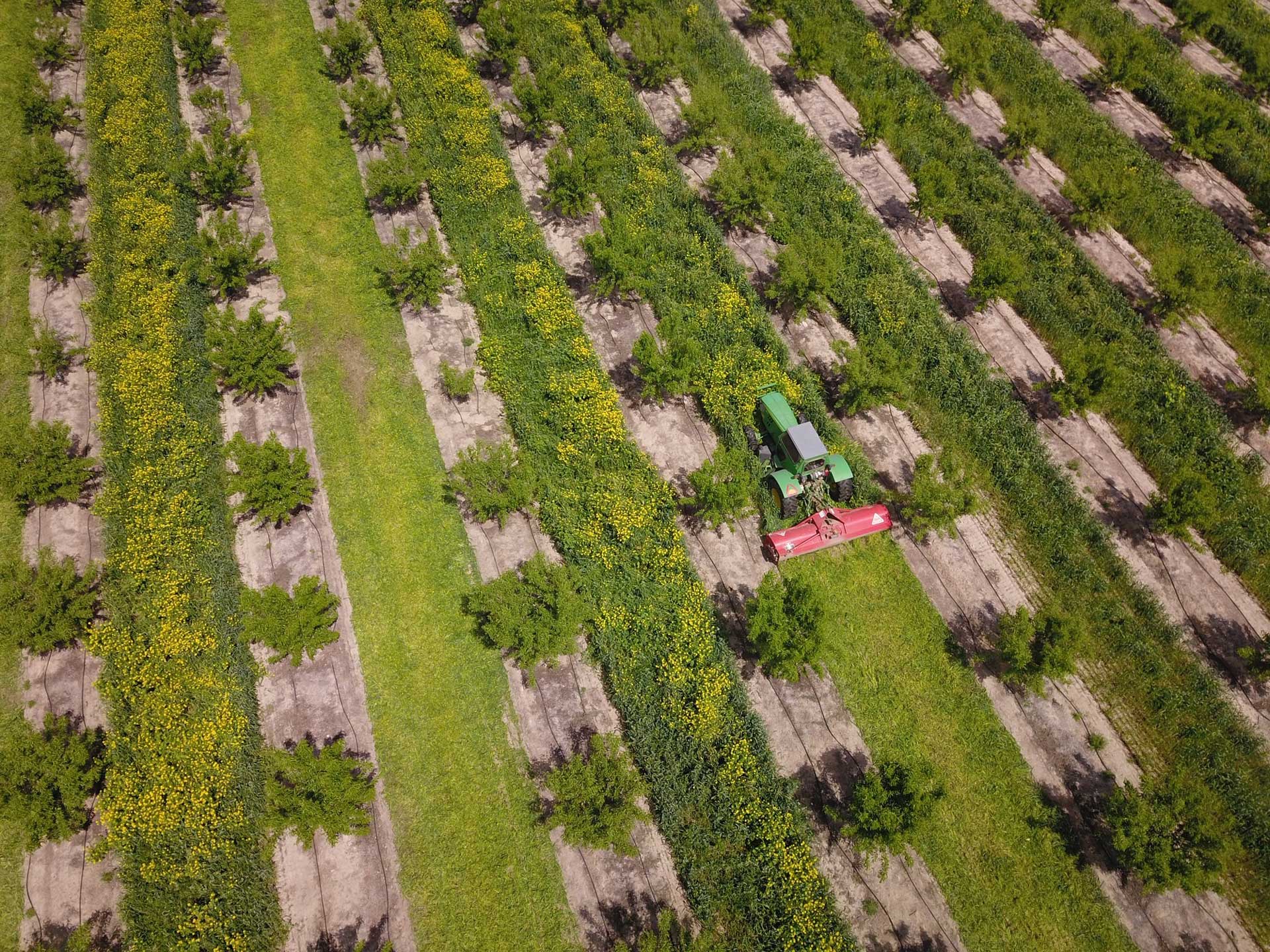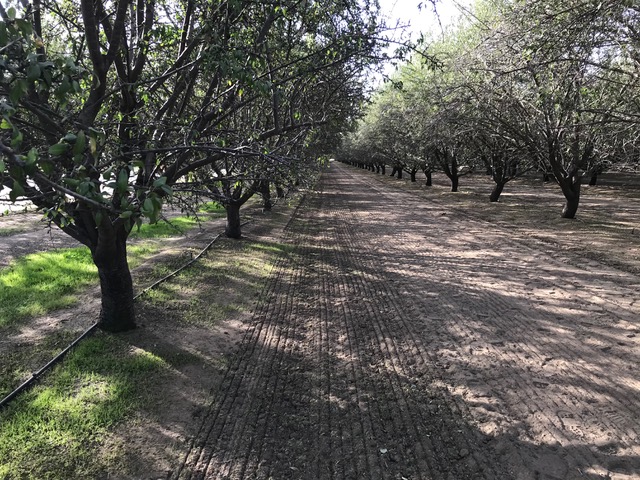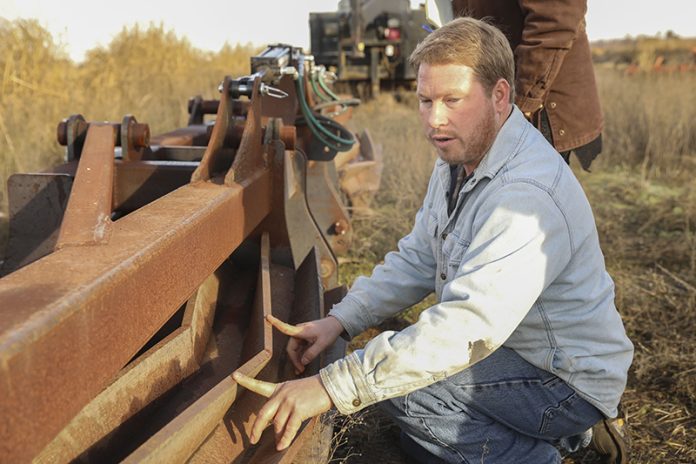
Why use a cover crop? That is the question to be answered by an ongoing Healthy Soil Program project partnership between Glenn County Resource Conservation District (RCD), California Olive Ranch, CDFA and California State University, Chico Center for Regenerative Agriculture.
As part of the partnership, Glenn County RCD created a farmer-led Steering/Technical Advisory Committee made up of farmers and local experts on the topic to ensure a locally led process. The Glenn County RCD’s Healthy Soils Program Demonstration Project, titled “Using Cover Crops to Advance Soil Health and Reduce Atmospheric Greenhouse Gases,” aims to demonstrate how planting cover crops in olive orchards, and similarly for nut orchards, may advance soil health, increase carbon sequestration and positively impact farming operations.
With this project, the partnership is, in part, hoping to highlight opportunities for cover cropping while demonstrating the soil health benefits through a three-year trial (2021-23).
Soil health indicators being monitored in this project include soil organic matter, total soil carbon, total soil nitrogen, water infiltration and bulk density.
In addition, due to the importance of healthy soils, the partnership is working to help provide opportunities to farmers while also sharing information and learning more through those opportunities.
Cindy Daley, director of the Center for Regenerative Agriculture and Resilient Systems at CSU Chico, explains cover cropping is used to keep the soil protected with plants that may or may not be used as an additional cash crop.
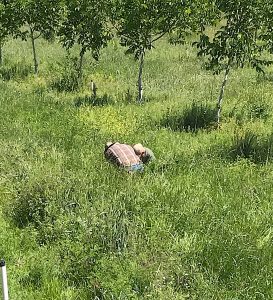
“The main purpose is to increase soil fertility and soil quality; to manage soil erosion; improve water retention; manage weeds, pests and diseases; and to increase biodiversity and native wildlife. Cover crops can also be used for forage,” she added. “Later in the season, the biomass left over after harvesting, grazing or after being mowed or roller crimped can be left on the ground to serve as mulch and to recycle nutrients back into the soil, otherwise known as green manure.”
And while the list of cover crop pros is lengthy, Daley shares there are a few considerations such as cost of seed and labor to plant and terminate the cover crop; it can take three to five years to see financial gains depending on previous farm and regional conditions; possible equipment expenditures; time to learn how to choose cover crops appropriately and manage them; and some long-term crop rotations may not be compatible with cover crops.
RCD’s Project
During a RCD Cover Crop Project presentation in Orland, Daley reiterated the many good reasons for cover crops on orchard floors: provides armor on the soil; feeds soil biology; reduces erosion; improves water infiltration and water holding capacity; and improves nutrient cycling.
The project is being conducted on 156.1 acres on the California Olive Ranch in Artois. For project purposes, the acreage was divided into 16 blocks of 8 to 10 acres each. Each block was then randomly assigned to two treatments, control and treated (six are controlled blocks, 10 treatment plots.)
“Treatment was planted September through December over the last three years, with seeding date depending on fall rains,” Daley said.
In the six control blocks there is no tillage or herbicide used.
The treatment plots were planted using a six-foot no-till drill with a variety of multi-species cover crop each fall, including mustards, radish, triticale, barley, oats and legumes.
“Those same plots relied on rainfall throughout the winter to grow; no irrigation was used,” Daley added.
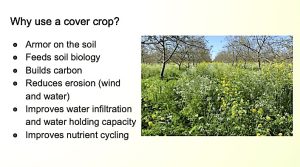
Results for 2021-22
Over a two-year period, the cover crop increased aggregate stability by an average of 34.25%.
“This was significant,” Daley said.
Aggregate stability refers to the percent of aggregates that remain stable when exposed to disturbance; the less stable the aggregates, the more susceptible the soil is to erosion.
Daley reported there has also been positive results in bulk density after two years. When bulk density is at levels at or below 1.0, the soil is porous and has many air pockets encouraging plant growth.
“When soil is compacted, the soil surface crusts, causing water runoff,” she said. “However, when the soil is porous, it allows water to percolate through the soil, reducing runoff and waste.”
In 2021 the project used a double ring infiltrometer to test infiltration rates. The next year, they used a Saturo Water Infiltrometer which measures water infiltration and saturated hydraulic conductivity instantly; however, the results so far have not been significant and are highly variable.
Data from two years of the three-year study show the cover crops did not impact crop yields to date.
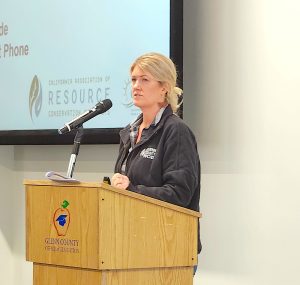
Looking at the most recent data, including year three, Daley said the cover crop had a positive effect on aggregate stability, soil health and bulk density.
“We are seeing trends toward improved water infiltration and improved soil organic carbon,” she added.
Daley noted these effects happened through two significant drought years and without irrigation support.
Grower Experiences
During the RCD’s Cover Crop Project presentation, Colusa walnut farmer Daniel Unruh shared some of his experiences with cover crops.
He is in the process of transforming his conventional family farm to be a model for regenerative agriculture.
While he still uses limited fertilizers and chemicals, Unruh is finding his work of regenerating the farm’s soil is already paying off with thriving fields and higher net profits.
According to Unruh, a large percentage of his success has been cover crops, reduced tillage and his own innovative farm equipment inventions designed to stimulate the cover crops to create biomass more efficiently.
The innovative farm equipment discussed at the project presentation was his custom-designed roller crimper.
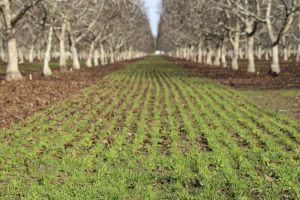
Unruh plants his cover crops before the rainy season in the fall. Come spring, he uses the roller crimper to roll down the cover crops while crimping the stem.
He said the two processes terminate the cover crop and allow the material to decompose more quickly.
One thing that makes his design different is the use of chevron crimps.
“You drastically increase the efficiency when you put more weight and pressure on the ground when you have a chevron design because it’s using all of the weight on a shorter area than if you just had a flat bar.”
He believes rolling and crimping is significantly more beneficial to the practice of shredding the cover crop.
Daley explains microorganisms like a dark, moist environment with a stable temperature. With cover crops that environment can be created when the cover crop is rolled and decomposing.
However, that dense layer of decomposing plant matter can over time become a thick mat that becomes anaerobic, leading to an environment unfriendly to the development of microorganisms and friendly to unwanted pathogens.
Unruh believes a shredder doesn’t leave a friendly environment for microorganisms as the mat of plant materials becomes too dense and loses its ability to be aerated.
Financial Incentives
The RCD’s Healthy Soils Program (HSP) is part of the California Healthy Soils Initiative, a collaboration of state agencies and departments to promote the development of healthy soils on California’s farmlands and ranch lands.
The state HSP has two components: the Healthy Soils Incentives Program and the HSP Demonstration Projects.
The HSP Incentives Program provides financial incentives to California growers and ranchers to implement conservation management practices that sequester carbon, reduce atmospheric greenhouse gasses and improve soil health.
The HSP Demonstration Projects aim to improve soil health, sequester carbon and reduce atmospheric greenhouse gasses; fund on-farm demonstration projects that collect data and/or showcase conservation management practices that mitigate greenhouse gas emissions and increase soil health; and create a platform promoting widespread adoption of conservation management practices throughout the state.
Resources
Apply for the EQIP, CSP, or CIG programs on the NRCS website: https://bit.ly/3vtUol9
CDFA Healthy Soil Program https://bit.ly/3pidbh3
Seeds for Bees Project: https://bit.ly/3fNV4Lx
Where to Get Seeds: Check with local food representatives
Green Cover: https://greencover.com/
Kamprath Seed: https://www.kamprathseed.com/


